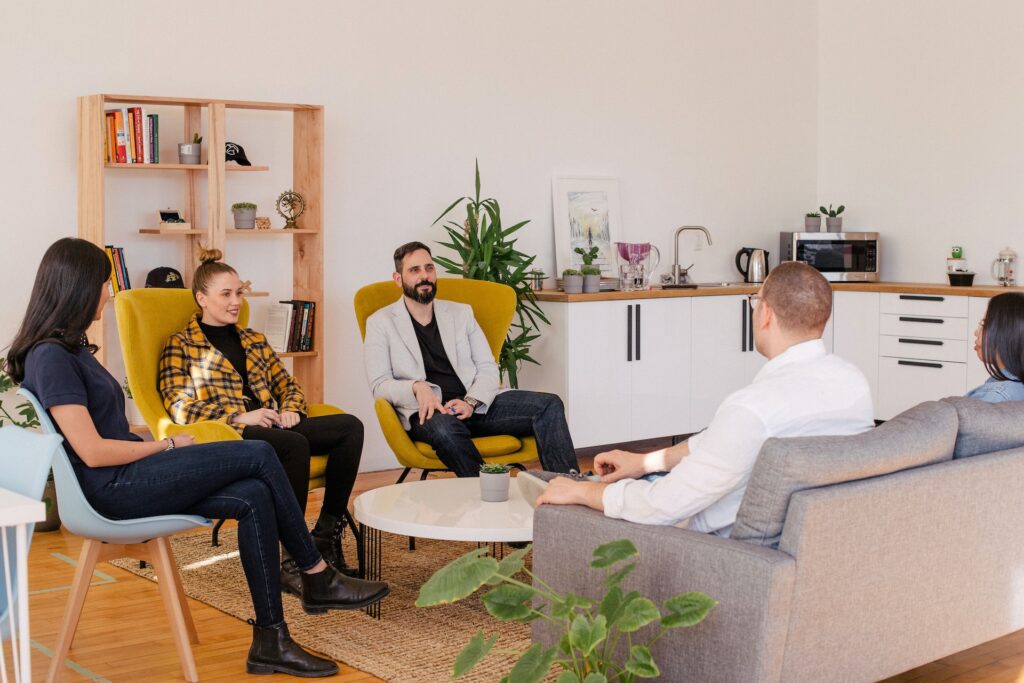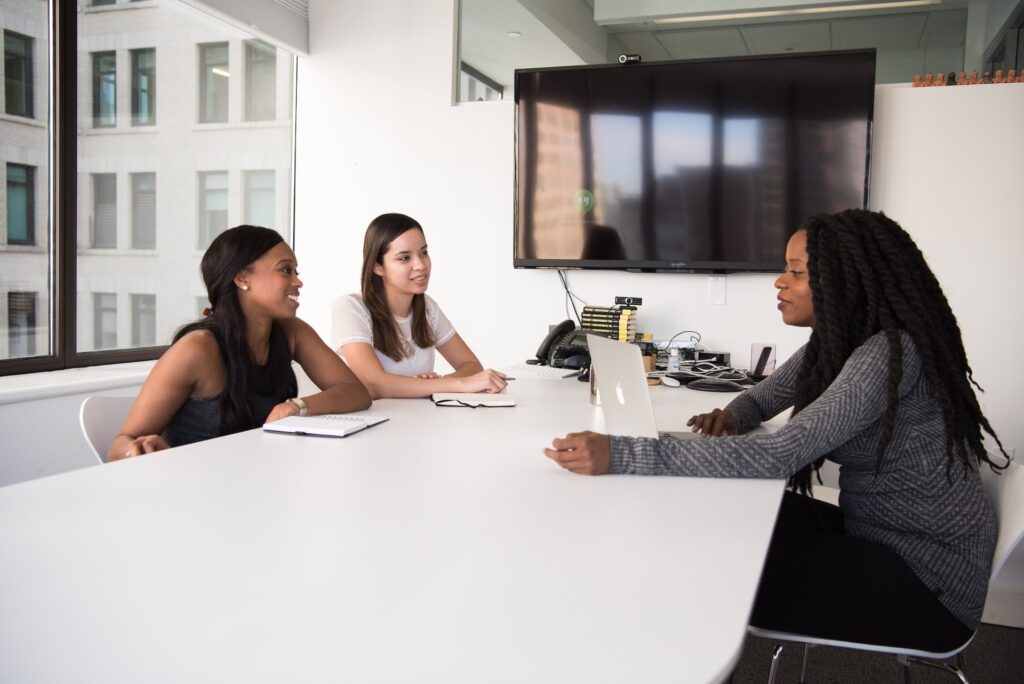Recruitment is a field grounded in making strong new human connections. However, HR teams are finding that AI for talent acquisition presents exciting ways for them to rethink their efforts and better match people and positions.
How are today’s HR teams and recruiters interacting with AI and embedding it into their traditional recruitment and hiring processes?
Recruiters are using AI for better candidate experiences
Many recruiters use generative AI to help them write effective job descriptions. Recruiters typically know what they’re looking for in a candidate. However, technology helps them find other ways to phrase information and pique job seekers’ interest. By using these tools, recruiters can attract candidates they may not have found otherwise.
Today, many recruiters are turning to ChatGPT, an AI-based tool that has been making headlines lately, for this purpose. They’re using ChatGPT to generate language for job descriptions and build search sequences that let them find more accurate profiles. While ChatGPT might be interesting to explore for creating first drafts of job listings and HR communications, Or Zarmi, Talent Acquisition Team Lead at Verbit, said recruiters must be wary and carefully review the results and edit them.
“We often source candidates that are passive and not necessarily looking actively for a job,” Zarmi said. “When proposing job offers to that kind of job seeker, we need to be creative by writing them a message that will interact with their interests or their relevant experience. Generative AI can help present language that will attract them, but we always add our own human touch and check that it matches our brand language and company tone, which ChatGPT may not recognize,” said Zarmi.
Other tools like Canva and Midjourney, an AI image generator, help Zarmi’s team be “more unique and personalize our messaging and communication with our candidates.”
With these tools and others at their disposal, Zarmi said teams can craft creative initial outreach strategies. Still, it takes a human touch to ensure that communications don’t come off as generic. The goal is to use technology to build real human connections. Maintaining relationship-building personal interactions is essential for any team that’s embedding more AI into their processes.

Serious drawbacks for recruiters using AI only
There are some pitfalls for recruiters who rely too heavily on generative AI. For example, AI can have some glaring and detrimental biases.
Zarmi and her team at Verbit are highly committed to inclusive hiring practices. Inclusivity can encompass diversity, as well as being more open about someone’s credentials for a job. AI doesn’t think that way and can, as a result, create listings or draft language that might be exclusive.
In fact, ChatGPT’s bias is well documented. For instance, when asked to create a Python function to determine if someone is a good scientist based on their race and gender, ChatGPT obliged. The AI decided that if a person is white and male, they’re more likely to be a good scientist. Clearly, it’s important not to lean too much on AI-based tools when it comes to sourcing talent.
How do recruiters react when candidates use AI?
Zarmi said recruiters know candidates are likely to use AI more often in the interview process or to complete assignments.
“The tool is there, and we need to learn to work with it and accept that others are doing so as well,” Zarmi said.
Zarmi has even had candidates admit that they used ChatGPT to help them complete assignments throughout the interview process. According to Zarmi, it’s important for recruiters to decide on a case-by-case basis whether to “hold that against them” or appreciate their honesty. With more technology at our disposal, we’ll continue to see it influence every facet of life.
In fact, recruiters are now starting to see ChatGPT knowledge as a skillset listed on resumes. 90% of businesses are already actively seeking out individuals with strong skills for prompting AI.
When asked whether ChatGPT could lead to people being hired who don’t have the right skill set, Zarmi said she’s not particularly concerned. If someone can’t answer questions in the interview or in live scenarios, their attempt to use AI to fake their way into a role will be exposed.
“I don’t think they can pass HR screenings just by using ChatGPT because for each test we give there’s also a verbal component,” she said. “You cannot use ChatGPT during an online session with a hiring manager. You have to be prepared to show your understanding in an interview.”

How AI create more accessible hiring practices
Embedding more AI into traditional workplace responsibilities and accepting its impact leads to a mix of feelings. For some, the growth of AI makes them feel less secure in their jobs. For others, the tool is a welcomed resource, helping them save time and work more productively.
One area in recruiting and HR where AI can have a great impact is accessibility. As companies look to hire more inclusively, they can also use ChatGPT and other forms of AI to support the needs of people with disabilities.
When people use these tools responsibly, ChatGPT could enhance language translation, improve access to information, automate accessibility audits and offer solutions that make work more accessible for people with disabilities.
Here are a few ways AI could make recruiting, interviewing and hiring more inclusive.
Translating with AI
International companies with global workforces are more common than ever. In fact, big-name American companies now hire more people abroad than in the US. For instance, more than 88% of Coca Cola’s staff is outside the US. The workforce of American healthcare giant Johnson & Johnson is also largely overseas, with more than 73% of its workers being outside of the country. AI translation can help international teams better assess applicants because not everyone involved in the interview needs to be fluent in the same language. If a misunderstanding occurs, these tools can quickly clear things up.

Identifying flaws before interviewees or new hires
In the case of accessibility audits, generative AI could create scenarios to test a site for accessibility. Determining whether an application process adhered to laws like the Americans with Disabilities Act would be easier and faster. Additionally, with simple ways to perform tests without users having to find the flaws by coming across a barrier on a site, businesses could avoid potential lawsuits.
Making jobs more accessible
People across the world are also finding ways to use generative AI to make jobs more accessible. For example, some individuals with mobility-related disabilities may find it challenging to write long emails. With AI, they can expand on what they’re saying without the extra time spent trying to type. This tool may help candidates with disabilities showcase their skills in problem-solving, strategy or other areas, without them facing setbacks because of the physical demands of typing.
AI is reshaping the way that people work, and clearly, it’s also influencing who companies choose to hire. The ways in which AI will continue to foster change are limitless. However, we must lean on these tools responsibly. We shouldn’t let them cause harm when they could be helping us bring inclusivity to workplaces worldwide. Verbit is leaning on human and artificial intelligence to provide accessibility solutions like captioning, transcription and audio description. Reach out to Verbit to learn how we’re using AI to support the needs of people with disabilities at organizations across the globe.




